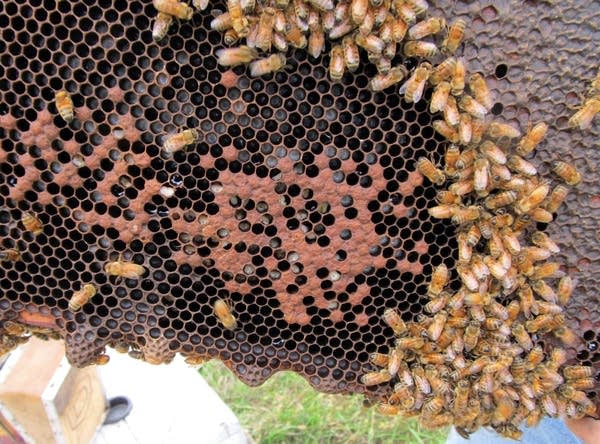Researchers, lawmakers see growing interest in protecting bees

Eggs laid in this bee hive were attacked by disease, reducing the ability of the bees to reproduce and survive.
MPR Photo/Dan Gunderson
Go Deeper.
Create an account or log in to save stories.
Like this?
Thanks for liking this story! We have added it to a list of your favorite stories.


